Common Names: Adormidera, Adormidero, Blue Bread Seed Poppy, Chandu, Gelinjik, Hashas, Kheshkhash Abu Al Noum, Madat, Mawseed, O Fang, O Fu Jung, O P'Ien, Opium, Opium Poppy, Poppy, Poppy, Opium, Poppy, Opium, Tengkoh, White Poppy, Ya P'Ien, Yu Mi Habitat: Not known in a truly wild situation.
Magickal Uses: *POISON* See .
Edible Uses: Leaves; Oil; Seed. Seed - raw or cooked. Much used as a flavouring in cakes, bread, fruit salads etc, it imparts a very nice nutty flavour. The crushed and sweetened seeds are used as a fillling in crepes, strudels, pastries etc. The seeds are perfectly safe to eat, containing very little if any of the narcotic principles. Highly nutritious, the seed contains about 22.7% protein, 48% fat, 9.8% carbohydrate, 7.1% ash. The seeds are rather small, but there are large numbers of them contained in capsules 3cm or more in diameter and so they are easy to harvest and utilize. Edible young leaves - raw or cooked. They must be used before the flower buds have formed. One report says that the leaves do not contain any narcotic principles. Some caution is advised, see notes at top of the page. A high quality edible drying oil is obtained from the seed. It has an almond flavour and makes a good substitute for olive oil.
Medicinal Uses: Anodyne; Antispasmodic; Antitussive; Astringent; Diaphoretic; Emmenagogue; Expectorant; Homeopathy; Hypnotic; Narcotic; Sedative. The opium poppy contains a wide range of alkaloids and has been a very valuable medicine, especially useful in bringing relief from pain. Its use (especially of the extracted alkaloids opium and morphine which it contains) can become addictive, however, and so it should be treated with extreme caution and only be used under the supervision of a qualified practitioner. The dried juice (latex) from the unripe green seed vessels is a rich source of the active alkaloids, including morphine. It is extracted by making shallow incisions in the capsules as soon as the petals have fallen. Care must be taken that the incisions do not penetrate to the interior of the seed capsules. The latex exudes from the capsules and dries in contact with the air - it is then scraped off. This latex is anodyne, antitussive, astringent, diaphoretic, emmenagogue, hypnotic, narcotic and sedative. As well as its pain-relieving properties, the latex has also been used as an antispasmodic and expectorant in treating certain kinds of coughs, whilst its astringent properties make it useful in the treatment of dysentery etc. A homeopathic remedy is made from the dried latex. This is used in the treatment of a variety of complaints, including constipation, fevers and insomnia.
Cultivation: Prefers a rich well-drained sandy loam in a sunny position. Requires a moist soil but does not do well on wet clays. Prefers a sandy loam or a chalky soil. Plants often self-sow in British gardens. The opium poppy is a very ornamental plant that is often cultivated in the flower garden. There are many named varieties, some of which have been developed for their edible uses. The plant is widely grown, often illegally, in warm temperate and tropical climates for the substances contained in its sap. These are often used medicinally as pain killers, especially in the treatment of terminally ill patients suffering extreme pain, they are also used for their narcotic effects by some people. These substances are highly addictive and lead to a shortening of the life span if used with any frequency. In cool temperate zones the plant does not produce sufficient of the narcotic principles to make their extraction feasible and cultivation of the plant is perfectly legal in Britain. Plants have ripened their seeds as far north as latitude 69°n in Norway. Members of this genus are rarely if ever troubled by browsing deer or rabbits.
Propagation: Seed - sow spring or autumn in situ.
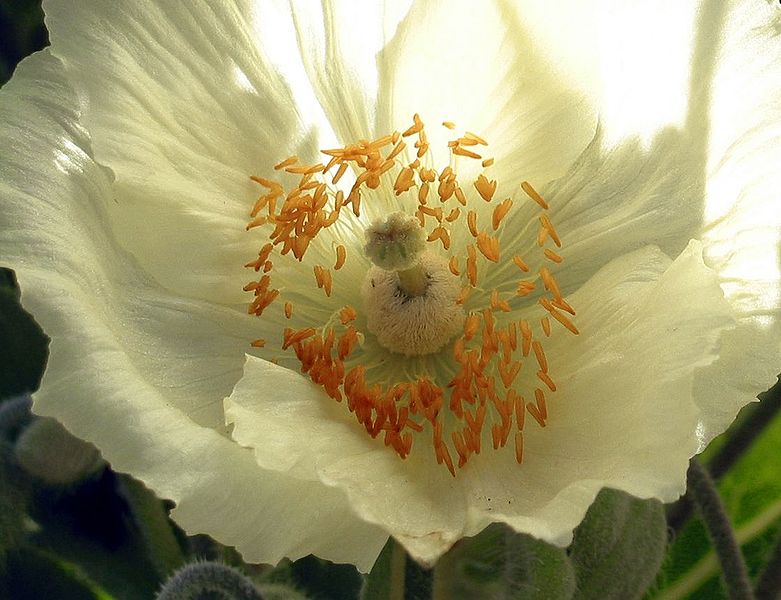
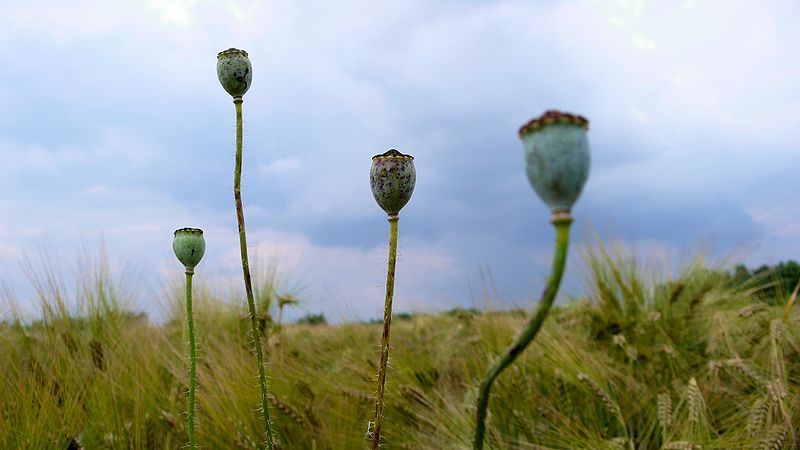
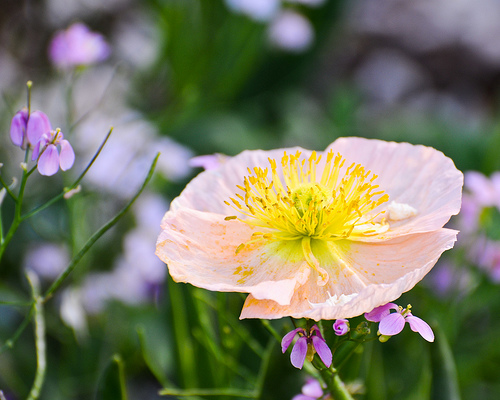
Papaver somniferum, the opium poppy, is an annual cultivar that grows from three to five feet tall and has white-to-pink, red, or purple flowers. The opium poppy is one of the most significant plants in history, having had considerable impact on the human condition and quality of life; both for good and bad.
Although it is often believed to be first cultivated in Asia, the opium poppy’s home actually lies in northern Italy, southern Germany and Switzerland, dating back at least 4,000 years as evidenced by fossil remains of poppy pods found in Neolithic Swiss lake dwellings. There are reports that the plant is also native to southern France, Spain, and northwestern Africa. Opium was said to be consumed by the ancient Egyptians, as well as the Greeks.
The opium poppy is one of the most important medicinal plants in the history of pharmaceuticals. It contains a latex - loaded with up to fifty strong alkaloids - which was known in ancient times as “the juice of the plant of forgetting” and as “tears of the moon.” Regarded as the nourishment of divining dragons and as a sleeping and dreaming agent, the Minoan culture used opium to induce ecstatic states for religious ceremonies. The shaman would give oracles and divine the future while under the influence of opium. According to Theocritus, the poppy grew from the tears that Aphrodite shed as she mourned her youthful lover Adonis, hence another of its earliest names “tears of Aphrodite.”
It is likely that the psychological effects of opium may have been known to the ancient Sumerians, based on early documentation of a Sumerian tablet (3000 B.C.E.) that described a “plant of happiness,” through the use of their symbols for poppies: hul = "joy" and gil = “plant.” The first literary notes of the opium poppy occurred in Homer’s Illiad and The Odyssey (850 B.C.). Hippocrates (460-357 B.C.) prescribed drinking the juice of the white poppy mixed with the seed of nettle.
Ancient peoples considered this a sacred medicinal plant and a source of powerful shamanic potions. The opium poppy was a magical ritual plant among the Germanic tribes. They reportedly planted poppies in fields that were known as odâinsackr and revered as convalescent sites where healing miracles would take place.
Papaver somniferum was considered sacred to the Germanic god Lollus. The name Lollus suggests the German word lallen (“slur”). It is surmised that Lollus, who was an oracular god known to “speak in tongues,” could have actually been slurring from being inebriated on opium. Speaking in tongues, also known as glossalalia, is a type of unconscious flow of speech that has been known since ancient times and appears both in shamanic rituals and religious cults.
The Great Mother goddess Cybele was depicted holding poppy capsules in her hand, as was Hypnos, the god of sleep and the “resolver of cares.” Hermes (or Mercury) carried the plant in his left hand. Thanatos, or Death, was decorated with garlands of poppies, while Nyx, the goddess of the night, was portrayed with poppies wrapped around her temples. Poppy seeds were an important ritual smoke offering to Hypnos, the god of sleep, at the Orphic mysteries, a cult of Dionysus.
Pliny the Elder, the ancient Roman author and naturalist, warned of the dangers of opium; however, its use as a medicine created addicts, such as the Roman Emperor Marcus Aurelius, and the great Arabic physician Avicenna died of an unintentional overdose of opium in wine. Later addicts included Elizabeth Barrett Browning, Dumas, Edgar Allen Poe, and Samuel Taylor Coleridge. So feared was addiction that France prohibited the sale of opium in the mid-1700s.
Its latex is collected by piercing the immature seed pod with a knife and then scraping off the coagulated latex into a container. When this powerful latex is exposed to air, it coalesces into the dark brown, dry, sticky mass known as opium, derived from the Greek word opos, which means “plant juice.”
Papaver somniferum was documented in China dating back to the fourth century A.D., when famed Chinese physician and surgeon Hua To used preparations of opium with Cannabis indica to help sedate patients before undergoing surgical procedures. By the fifteenth century, opium was used in great quantities in Beijing and celebrated as the best of all aphrodisiacs.
Women in Oriental harems used opium in a drawn-out ritualistic fashion. They would spend their evenings ingesting opium pills and inhaling hookahs filled with opium smoking mixtures, dreaming of far-off worlds beyond their lattice-windowed “jails.” They preferred eating opium because the effects lasted longer and their dreams would linger until the sunrise. They would partake so much opium that it would produce amnesia; night after night they followed this ritual of induced chronic insomnia followed by amnesia. Soon they would forget their faraway homes and families, and their lives before the harem.
Widespread opium use began in China with the introduction of the tobacco trade by the Dutch in the 17th century. The Chinese mixed opium with tobacco and would smoke the mixture in long-stemmed pipes. This practice was adopted throughout the region and resulted in increased opium smoking, both with and without tobacco. By the 17th century, the Dutch East India Company controlled the prime poppy growing regions and dominated the Asian opium trade.
Morphine was first isolated from opium in 1805 by the German pharmacist Friedrich Wilhelm Sertürner, who named the bitter white crystalline alkaloid morphium after Morpheus, the Greek god of dreams. We know it today as morphine.
By the late 1800s, opium was being heavily used in China as a recreational drug. The Imperial court banned its use and importation but large quantities were still being smuggled into China by the British. The Emperor petitioned Queen Victoria for help but was ignored. In reaction, the English initiated the Opium War of 1840-1842 purely from economic motives, which led to far-reaching changes in world politics and the shape of international trade. The British required that the opium trade be allowed to continue. In addition, the Chinese were forced to pay a large settlement and cede Hong Kong to the British Empire.
By the 1850s, pure alkaloids, rather than the earlier crude opium preparations, were being commonly prescribed for the relief of aches and pains, coughs, and diarrhea. This period also saw the invention and introduction of the hypodermic syringe. Opium contains morphine, codeine, noscapine, papaverine, and thebaine. All but thebaine are used clinically as analgesics to reduce pain without a loss of consciousness. Thebaine is without analgesic effect but is of great pharmaceutical value due to its use in the production of semisynthetic opioid morphine analogues such as oxycodone, dihydromorphenone and hydrocodone
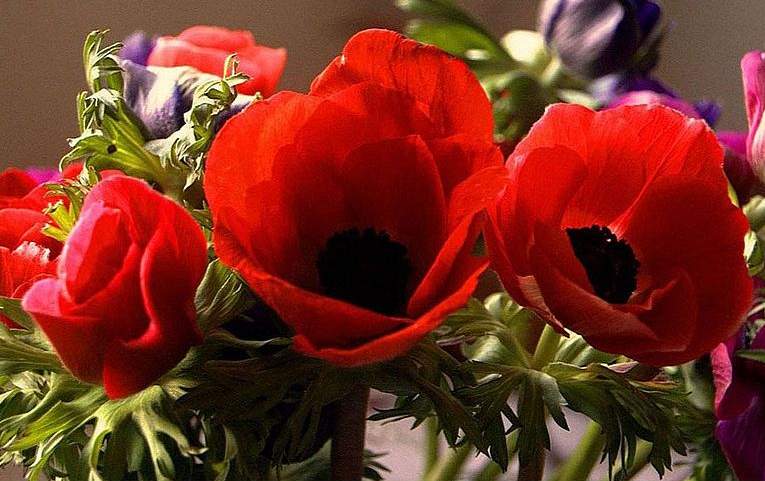
به صورت خوردن، كشيدن يا تزريقي مورد مصرف قرار مي گيرد. ترياك از نظر طبقه بندي فارماكولژي، تضعيف كننده فعاليتهاي سلسله اعصاب مركزي است.
علائم مصرف ترياك
مهمترين علائم مصرف ترياك و مشتقات آن عبارتند از : 1- خواب آلودگي با حضور ذهن, 2- تسكين درد, 3- انبساط خاطر و آرامش, 4- احساس گنگ و مبهم به زمان و مكان, 5- بخواب رفتن با آرامش و تخيلات مطبوع, 6- سستي اراده و ضعف حركات فعاله و 7- كاهش اميال جنسي.
تصوير2- ترياك پرورده
علائم مصرف ترياك
مهمترين علائم مصرف ترياك و مشتقات آن عبارتند از : 1- خواب آلودگي با حضور ذهن, 2- تسكين درد, 3- انبساط خاطر و آرامش, 4- احساس گنگ و مبهم به زمان و مكان, 5- بخواب رفتن با آرامش و تخيلات مطبوع, 6- سستي اراده و ضعف حركات فعاله و 7- كاهش اميال جنسي.
تصوير2- ترياك پرورده
اثرات دلپذير و آرامش بخش مواد مخدر بسته به مصرف دارو و تحمل شخص بمدت چهار تا شش ساعت ادامه مي يابد و پس از آن مرحله خماري فرا مي رسد كه بصورت خميازه و آبريزش از بيني, بيقراري, بي اشتهائي, افسردگي, تهوع و استفراغ مي باشد.
بعد از كشيدن به اصطلاح چند "بست" ترياك, توجه فرد بر روي خودش متمركز شده و گرايش شديدي به آرامش پيدا مي كند. درحقيقت اعصابش آرام و اراده اش سست شده و در تفكر و خيال فرو مي رود و از معاشرت با ديگران تا حدودي پرهيز مي كند و از وزن و زمان و فضا آزاد مي شود. و دگرگوني در جهت يابي زماني- فضائي در وي ايجاد مي شود. مصرف ترياك سبب مي شود تا گذشته وآينده فرد با هم مخلوط شده و مجموعه "حال" را برايش ايجاد نمايد و از زمان آزاد گردد.
شخص معتاد به ترياك در خيال واهي خود پس از استعمال ترياك احساس مي كند كه داراي روشن بيني زياد و قدرت فهم و قضاوت هوشيارانه و بينش و ادراك اصيل از دنياي اطرافش مي باشد و از اين كه بدون هيچ سعي و كوششي داراي اين حالت در تفكر و تصور گرديده ابتدا تعجب مي كند. ولي رفته رفته در حالت كيف فرورفته و احساس خوشي و خوشبختي به وي دست مي دهد و درنتيجه نسبت به محيط اطراف خود بيگانه و بي تفاوت مي گردد.
با توجه به مطالب ذكرشده, فرد معتاد به ترياك به سهولت مي تواند, ساعات شبانه روز را با بي خوابي و روياهاي رضايتبخش ادامه دهد. و بتدريج در وي وابستگي و بندگي ايجاد شود و در فواصل بست يا پيپ ها اين فرد انرژي خود را از دست داده و اندوهگين و بي حوصله مي شود و حالت يكنواختي در صدا و كندي در حركاتش نمايان مي شود.
بعد از كشيدن به اصطلاح چند "بست" ترياك, توجه فرد بر روي خودش متمركز شده و گرايش شديدي به آرامش پيدا مي كند. درحقيقت اعصابش آرام و اراده اش سست شده و در تفكر و خيال فرو مي رود و از معاشرت با ديگران تا حدودي پرهيز مي كند و از وزن و زمان و فضا آزاد مي شود. و دگرگوني در جهت يابي زماني- فضائي در وي ايجاد مي شود. مصرف ترياك سبب مي شود تا گذشته وآينده فرد با هم مخلوط شده و مجموعه "حال" را برايش ايجاد نمايد و از زمان آزاد گردد.
شخص معتاد به ترياك در خيال واهي خود پس از استعمال ترياك احساس مي كند كه داراي روشن بيني زياد و قدرت فهم و قضاوت هوشيارانه و بينش و ادراك اصيل از دنياي اطرافش مي باشد و از اين كه بدون هيچ سعي و كوششي داراي اين حالت در تفكر و تصور گرديده ابتدا تعجب مي كند. ولي رفته رفته در حالت كيف فرورفته و احساس خوشي و خوشبختي به وي دست مي دهد و درنتيجه نسبت به محيط اطراف خود بيگانه و بي تفاوت مي گردد.
با توجه به مطالب ذكرشده, فرد معتاد به ترياك به سهولت مي تواند, ساعات شبانه روز را با بي خوابي و روياهاي رضايتبخش ادامه دهد. و بتدريج در وي وابستگي و بندگي ايجاد شود و در فواصل بست يا پيپ ها اين فرد انرژي خود را از دست داده و اندوهگين و بي حوصله مي شود و حالت يكنواختي در صدا و كندي در حركاتش نمايان مي شود.
بوته خشخاش از گياهان آسياي صغير بوده است. (مارسل گرانيرد وايه) (Marcel Granin Doyeux) معاون سابق بخش كنترل مواد مخدر در سازمان ملل متحد، متخصص و دارو شناس و نزوئلايي در اين باره گفته است كه:
(در لوحه هاي سومري متعلق به سه يا چهار هزار سال پيش از ميلاد مسيح مطالبي پيرامون گياه ترياك نوشته شده و آن را (گياه شادي بخش) ناميده اند. متون آشوري، مصري و يوناني در مورد استفاده ترياك در زمانهاي قديم مطالب بسياري دارند).
در كتاب اديسه هومر آمده است كه (النا) (Elena) همسر شاه (منلائو) شربتي به (تلماكو) (Telemaco) داد. از جستجوي بي حاصل پدر غمگين بود، (مروفه) (Morfer) خداي رويا و خيال در داستانهاي اساطيري يونان – گل خشخاش بدست مي گيرد.
هرودت، ارسطو و هيپوكرات در كتابهايشان از ترياك بسيار سخن گفته اند. زنان مصري از شربت ترياك براي فرونشاندن خشم و تسكين غم استفاده مي كرده اند، از زمان (ارسطو) تا (ويرژيل) شاعر رومي و ديگر نويسندگان يونان و رم همواره از خشخاش و ترياك سخن گفته اند. صحبت از آن، در قرون وسطي نيز ادامه يافت.
برخي مطالعات نشان مي دهد، اين ماده در قرن هشتم (ميلادي) در هند رايج شده و عده اي عقيده دارند، سابقه استفاده از آن در هند به دروازه قرن قبل از لشكر كشي اسكندر مقدوني مي رسد.
گياه خشخاش
به نظر مي رسد اولين تركيب دارويي ترياك در قرن 16 ميلادي به دست آمد و آن را به نام كاشف سوئيسي اش ناميدند كه دكتر پاراسلوس بود.(Claudanum Para cel si), (Dr. Paracelsus)
يك پزشك انگليسي به نام توماس سيدنهام (Thomas Sydenham) كه افلاطون انگلستان ناميده شده، نيز در قرن هفدهم م. داروي جديدي را با ترياك تهيه كرد.
در قرن نوزدهم م. بسياري ديگر از فرآورده هاي آن ( مورفين ، كدئين و... ) كشف گرديد.
گيـــــاه خشخاش از ناحيــــــه آسياي صغير به يونان منتقـــــل شده، اگـــــر چه در بعضـــي منــــابع آمــــده است كه در اروپـــــا مجـــــارها اولين ملتي هستند كه با گياه خشخاش آشنا شده اند و گياه شناسان اين كشور، اين آشنايي را از هزار و دويست سال قبل از ميلاد به بعد مي دانند. ولي هومر شاعر نابينا و حماسه سراي يوناني كه احتمالا 600 سال قبل از ميلاد مي زيسته در آثار خود از گل خشخاش ياد مي كند كه در باغهاي شهر روم كشت مي شده و چون يونانيان زمان سقراط يعني حدود چهار صد سال قبل از ميلاد از تاثيرات طبي ترياك سخن گفته اند، مي توان گفت كه حداقل آشنايي يونانيان با تاثيرات طبي مخدرها به چند صد سال قبل از ميلاد مسيح بر مي گردد.
گياه خشخاش
(در لوحه هاي سومري متعلق به سه يا چهار هزار سال پيش از ميلاد مسيح مطالبي پيرامون گياه ترياك نوشته شده و آن را (گياه شادي بخش) ناميده اند. متون آشوري، مصري و يوناني در مورد استفاده ترياك در زمانهاي قديم مطالب بسياري دارند).
در كتاب اديسه هومر آمده است كه (النا) (Elena) همسر شاه (منلائو) شربتي به (تلماكو) (Telemaco) داد. از جستجوي بي حاصل پدر غمگين بود، (مروفه) (Morfer) خداي رويا و خيال در داستانهاي اساطيري يونان – گل خشخاش بدست مي گيرد.
هرودت، ارسطو و هيپوكرات در كتابهايشان از ترياك بسيار سخن گفته اند. زنان مصري از شربت ترياك براي فرونشاندن خشم و تسكين غم استفاده مي كرده اند، از زمان (ارسطو) تا (ويرژيل) شاعر رومي و ديگر نويسندگان يونان و رم همواره از خشخاش و ترياك سخن گفته اند. صحبت از آن، در قرون وسطي نيز ادامه يافت.
برخي مطالعات نشان مي دهد، اين ماده در قرن هشتم (ميلادي) در هند رايج شده و عده اي عقيده دارند، سابقه استفاده از آن در هند به دروازه قرن قبل از لشكر كشي اسكندر مقدوني مي رسد.
گياه خشخاش
به نظر مي رسد اولين تركيب دارويي ترياك در قرن 16 ميلادي به دست آمد و آن را به نام كاشف سوئيسي اش ناميدند كه دكتر پاراسلوس بود.(Claudanum Para cel si), (Dr. Paracelsus)
يك پزشك انگليسي به نام توماس سيدنهام (Thomas Sydenham) كه افلاطون انگلستان ناميده شده، نيز در قرن هفدهم م. داروي جديدي را با ترياك تهيه كرد.
در قرن نوزدهم م. بسياري ديگر از فرآورده هاي آن ( مورفين ، كدئين و... ) كشف گرديد.
گيـــــاه خشخاش از ناحيــــــه آسياي صغير به يونان منتقـــــل شده، اگـــــر چه در بعضـــي منــــابع آمــــده است كه در اروپـــــا مجـــــارها اولين ملتي هستند كه با گياه خشخاش آشنا شده اند و گياه شناسان اين كشور، اين آشنايي را از هزار و دويست سال قبل از ميلاد به بعد مي دانند. ولي هومر شاعر نابينا و حماسه سراي يوناني كه احتمالا 600 سال قبل از ميلاد مي زيسته در آثار خود از گل خشخاش ياد مي كند كه در باغهاي شهر روم كشت مي شده و چون يونانيان زمان سقراط يعني حدود چهار صد سال قبل از ميلاد از تاثيرات طبي ترياك سخن گفته اند، مي توان گفت كه حداقل آشنايي يونانيان با تاثيرات طبي مخدرها به چند صد سال قبل از ميلاد مسيح بر مي گردد.
گياه خشخاش
بقراط در چهار صد سال قبل از ميلاد مسيح و نئوفراست در همان تاريخ از ترياك براي درمان اسهال و رفع درد استفاده مي كرده اند.
از نوشته هاي پاپيروس بر مي آيد كه مصري ها از زمانهاي قديم (اپيوم) استعمال مي كرده اند و اسم (Thebaica) مشتق از شهر (Thebes) است كه در آنجا خشخاش نيز مي كاشتند.
در ژاپن تا قرن پانزدهم ميلادي گياه خشخاش كشت نشده بود، در دايره المعارف بريتانيكا آمده كه ترياك در قرن هفتم قبل از ميلاد مسيح در چنين كشت مي شده و به وسيله تركها و عربها در قرون 6 و 7 به چين برده شده و تا قرن هفدهم ميلادي براي تسكين دردها و به طور محدود مورد استفاده بوده است. در قرن هيجدم م. مصرف دارويي ترياك در دنيا حدود 1700 تن بود.
ترياك خام (طبيعي) به صورت گلوله، چانه، قرص، قالبي، آجري و حتي به صورت پودر عرضه مي گرديد و در قديم براي تسكين درد به طور مايع و جامد استفاده مي شده است.
در ايران، پزشكان عالي قدري مانند شيخ الرييس ابوعلي سينا (370 – 427 ه. ق) و ابوبكر محمد بن زكرياي رازي (251- 313 ه. ق) از ترياك در مواد گوناگون بيماري ها استفاده كرده اند و در اشعار شعرايي كه پس از اين دو دانشمند مي زيسته اند، به موارد طبي ترياك اشاراتي شده است.
اگر چه خوردن ترياك در چيــــن معمول بود، ولي دود كردن و كشيدن ترياك از آمريكاي شمالي به چين رسيد و رايج گرديد. بعضي از مــــردم تــــرياك را با توتون مخلوط مي كردند، و بزودي كشيدن ترياك به حدي بين مردم گسترش يافت و عمومي شد كه حتي به درباريان هم سرايت كرد و به عنوان يك مشكل بزرگ اجتماعي چين در آمد كه در سال 1729 م. توسط امپراطور (يانگ چينگ، 1735 – 1723 م.) ممنوع اعلام شد.
فروش و كشيدن ترياك ممنوع گرديد و موقتا به تجارت ترياك لطمه زد. با وجود اين لطمه، كمپاني انگليسي هند شرقي به كشت ترياك در ايالت بنگال هند ادامه داده و آن را در سال 1775 م. به وسيله (ناركي وارن هستينگ) كه از صورت يك كارمند ساده به حكمراني كليه املاك انگليس در هند رسيده بود، در انحصار خود گرفت و او اين ماده را با نرخي ارزان و مقدار فراوان عرضه مي كرد.
كمپاني ، خود مستقيما در چين فعاليت فروش نداشت و ترياك را به بازرگانان بزرگ و خصوصي چين در ساحل تحويل مي داد و بازرگانان ياد شده آن را در بازارهاي چين به فروش مي رساندند، و در ازاي فروش ترياك، طلا و نقره و گاهي هم چاي، كتان، ابريشم به نمايندگان كمپاني تحويل مي دادند.
مقدار ترياكي كه كمپاني ياد شده در سال 1729 م. به چين داده، 200 صندوق بود كه در سال 1767 م. به 1000 و در سال 1820 م. به 10000 و از 1830 تا 1838 م . به 40000 صندوق افزايش يافت.
در ماه مارس 1839 م. امپراطور وقت، (لين چه هسو) را كه مردي قاطع بود به كانتون فرستاد و او پس از گفتگوهاي بي نتيجه با تجار خارجي و چيني دستور داد بيش از 20000 صندوق كه حاوي حدود يك ميليون و نيم كيلو ترياك بود، مصادره شود. صندوقها را به ساحل بردند و (لين) شخصا در ميان ابراز احساسات مردم، آنها را آتش زد، آتشي كه 20 روز روشن بود.
به موازات انگليس ها و همراه با آنها پرتغاليها و ديگر كشورهاي غربي حتي ايالات متحده آمريكا از تركيه و هند ترياك تهيه كرده و به تجارت آن در چين مي پرداختند. مشكل ترياك سرانجام منجر به جنگهاي ترياك در سالهاي 42- 1839 م . و 60- 1856 م. شد.
در فاصله جنگ هاي اول و دوم، تجارت ترياك در چين از 50000 به 60000 صندوق افزايش يافت.
در ســــال 1907. (چينگ) توانست جلوي ورود ترياك را به داخل چين بگيرد و تا سال 1917 م. ورود تــرياك از هند به چين ممنوع بود ولي چيني ها خود مبادرت به كشت خشخاش در داخل كشورشان كردند.
با وجود ممنوعيت هـــاي فرمانروايان چين، در اوايل جنگ جهاني اول باز هم بيش از هفتاد ميليون كيلو ترياك وارد چين شد.
گويا در سال 1937 م. حدود 4 ميليون نفر چيني به ترياك معتاد بوده اند كه نامشان ثبت شده بود و در سال 1938 م (مائو) رهبر حزب كمونيست چين مي شود.
در دهه هاي 1940 تا 1980 م مبارزه شديد عليه اعتياد و درمانهاي اساسي و گسترده براي معالجه اعتياد در چين جريان داشته و اين كشور تجربيات با ارزشي در اين زمينه دارد.
هم اكنون در ناحيه يونتان در جنوب غربي چين كه در مجاورت برمه، لائوس و تايلند (مثلث طلايي) قرار دارد، كشت خشخاش براي استفاده دارويي مجاز است و همين امر موجب بقاي اعتياد در اين ناحيه شده و ضمنا گزارش شده ترياك از اين منطقه تا حدودي به صورت غير قانوني از بنادر چين به هنگ كنگ و غيره قاچاق مي شود.
تاريخچه ترياك در ايران
در ايران كشت ترياك در دوره سلسله صفويه براي مصرف داخلي كه در ايران گسترش سرسام آوري داشته، تا حدي كه بعضي از پادشاهان اين سلسله هم معتاد بودند، ولي با دقت در اشعار شعراي پيش از اين تاريخ گويا ايرانيان پيش از اين دوره هم ترياك خواري داشته اند.
تاورنيه و شاردن كه در زمان صفويه از ايران ديدن كرده اند، مي نويسند: (خوردن ترياك و كوكنار در ايران رايج است).
فرير (Freyer) طبيب و جراح كمپاني انگليسي هند شرقي كه در سال 1087 ه. ق از ايران ديدن كرده، در سفر نامه خود مي نويسد: "ايرانيها هر وقت بخواهند كيفور شوند، ترياك مصرف مي كنند" و اضافه مي نمايد: " كه معتادين مي توانند مقدار زيادي از اين ماده مصرف كنند بدون آنكه ناراحتي پيدا نمايند و آنها حالتي شبيه به مستي پيدا مي كنند و در بين آنان ضرب المثلي وجود دارد كه مي گويند: در كرمان از هر سه نفر چهار نفرشان ترياكي هستند".
استعمار انگليس پس از به زانو در آوردن هند، بر آن شد كه ميان لندن و هندوستان خط ارتباطي تلگراف برقرار كند و براي اين هدف مي بايست از ايران بهره مي گرفت. بنابراين، موضوع را به ناصر الدين شاه گوشزد كرد و آن را عملــي ساخت و از اين رو سيم بانان و كارگران هندي خط ارتباطي، از بزرگترين عوامل گسترش و آمــــوزش ترياك كشي در ايران گرديدند و خراسان دروازه ترياك كشي شد، به طوري كه از سال 1230 ه. ش پيشقراولان قاچاقچيان اين ماده مخدر در لباس دراويش هندي در خراسان و كرمان پراكنده شدند و به ترياك كشي پرداختند.
اين سوداگران انگليسي بودند كه از يكسو به طور غير مستقيم سعي در تشويق كشت و توليد بيشتر ترياك نموده و از سويي ديگر ترياك كشي را در سطح گسترده اي در سراسر ايران گسترش دادند تا بتوانند سلطه خود را در كشور هاي تحت استعمار بيشتر كنند.
بنابراين همراه با رشد استعمار در جوامع در حال توسعه، كشت خشخاش و اعتياد به ترياك نيز در روستــاهاي ايران متداول گشت و خريد و فروش آن معمول گرديد و از آنجا كه انگليسي ها ترياك ايران را به قيمت خوبـــي مي خريدند، كشاورزان دست از كاشت گندم و ديگر محصولات كشاورزي كشيدند و قسمت زيادي از كشتزارهاي گندم را به كشت خشخاش اختصاص دادند، به طوري كه ترياك به صورت يكي از مهم ترين كالاهاي صادراتي ايران در آمد.
ماژوري نومي مورخ انگليسي در اين مورد در كتاب (شرق ميانه) مي نويسد: " از 26 ولايت ايران در 18 ولايت آن ترياك كاشته مي شود و........".
از طرفي براي كشت خشخاش كشاورزان و كارگران هنگام گرفتن شيره خشخاش از آن مي خوردند و به آن عادت مي كردند. سرانجام در 1329 ه. ش رژيم وقت به منظور كنترل ترياك و در واقع حفظ منابع مادي خود قرارداد "انحصار ترياك" را به تصويب مي رساند. هر چند اين قانون ظاهرا در جهت كاهش ميزان مصرف اين ماده و مبارزه با آن وضع گرديده بودن ولي عملا مردم را به ترياك كشي دعوت و تشويق مي نمود، زيرا در بخشي از اين قرارداد مقرر گرديده بود كه دولت موظف است سوخته ترياك را پس از مصرف، جمع آوري كند و در ازاي هر مثقال سوخته ترياك مبلغي هم به عنوان حق الزحمه به تحويل دهنده پرداخت نمايد. بدين گونه ملاحظه مي گردد كه چگونه استعمار خارجي و ايادي داخلي آن در تار و پود اين ملت رخنه مي كنند و مردم را به اسارت مواد مخدر در مي آورند.
در سالهاي جنگ جهاني دوم و پي از آن قاچاق مواد افيوني و اعتياد به آن رواج بيشتري پيدا مي كند، تا آنكه در سال 1334 ه. ش قانون منع كشت خشخاش و جلوگيري از مصرف غير طبي ترياك از تصويب مجلس گذشت و در سال 1348 دولت وقت، قانون منع كشت خشخاش را لغو كرده و قانون كشت محدود خشخاش و سهميه كوپن ترياك را جايگزين آن نمود. ولي كليه اقدامات دولت وقت، ظاهري بود و رژيم نه تنها سعي جدي در از بين بردن و حتي محدوديت آن اعمال نمي داشت، بلكه عوامل استعمار خارجي و داخلي نيز به نوعي در گسترش اعتياد مي كوشيدند.
آنچه قابل ذكر مي باشد اين است كه در سال 1311 ه. ش. (زمان سلطنت رضا خان) هشت شيره كش خانه به طور رسمي در محله باغ فردوس كنوني داير بود كه نام آنها را دارالعلاج يا شفا خانه گذاشته بودند!!
از نوشته هاي پاپيروس بر مي آيد كه مصري ها از زمانهاي قديم (اپيوم) استعمال مي كرده اند و اسم (Thebaica) مشتق از شهر (Thebes) است كه در آنجا خشخاش نيز مي كاشتند.
در ژاپن تا قرن پانزدهم ميلادي گياه خشخاش كشت نشده بود، در دايره المعارف بريتانيكا آمده كه ترياك در قرن هفتم قبل از ميلاد مسيح در چنين كشت مي شده و به وسيله تركها و عربها در قرون 6 و 7 به چين برده شده و تا قرن هفدهم ميلادي براي تسكين دردها و به طور محدود مورد استفاده بوده است. در قرن هيجدم م. مصرف دارويي ترياك در دنيا حدود 1700 تن بود.
ترياك خام (طبيعي) به صورت گلوله، چانه، قرص، قالبي، آجري و حتي به صورت پودر عرضه مي گرديد و در قديم براي تسكين درد به طور مايع و جامد استفاده مي شده است.
در ايران، پزشكان عالي قدري مانند شيخ الرييس ابوعلي سينا (370 – 427 ه. ق) و ابوبكر محمد بن زكرياي رازي (251- 313 ه. ق) از ترياك در مواد گوناگون بيماري ها استفاده كرده اند و در اشعار شعرايي كه پس از اين دو دانشمند مي زيسته اند، به موارد طبي ترياك اشاراتي شده است.
اگر چه خوردن ترياك در چيــــن معمول بود، ولي دود كردن و كشيدن ترياك از آمريكاي شمالي به چين رسيد و رايج گرديد. بعضي از مــــردم تــــرياك را با توتون مخلوط مي كردند، و بزودي كشيدن ترياك به حدي بين مردم گسترش يافت و عمومي شد كه حتي به درباريان هم سرايت كرد و به عنوان يك مشكل بزرگ اجتماعي چين در آمد كه در سال 1729 م. توسط امپراطور (يانگ چينگ، 1735 – 1723 م.) ممنوع اعلام شد.
فروش و كشيدن ترياك ممنوع گرديد و موقتا به تجارت ترياك لطمه زد. با وجود اين لطمه، كمپاني انگليسي هند شرقي به كشت ترياك در ايالت بنگال هند ادامه داده و آن را در سال 1775 م. به وسيله (ناركي وارن هستينگ) كه از صورت يك كارمند ساده به حكمراني كليه املاك انگليس در هند رسيده بود، در انحصار خود گرفت و او اين ماده را با نرخي ارزان و مقدار فراوان عرضه مي كرد.
كمپاني ، خود مستقيما در چين فعاليت فروش نداشت و ترياك را به بازرگانان بزرگ و خصوصي چين در ساحل تحويل مي داد و بازرگانان ياد شده آن را در بازارهاي چين به فروش مي رساندند، و در ازاي فروش ترياك، طلا و نقره و گاهي هم چاي، كتان، ابريشم به نمايندگان كمپاني تحويل مي دادند.
مقدار ترياكي كه كمپاني ياد شده در سال 1729 م. به چين داده، 200 صندوق بود كه در سال 1767 م. به 1000 و در سال 1820 م. به 10000 و از 1830 تا 1838 م . به 40000 صندوق افزايش يافت.
در ماه مارس 1839 م. امپراطور وقت، (لين چه هسو) را كه مردي قاطع بود به كانتون فرستاد و او پس از گفتگوهاي بي نتيجه با تجار خارجي و چيني دستور داد بيش از 20000 صندوق كه حاوي حدود يك ميليون و نيم كيلو ترياك بود، مصادره شود. صندوقها را به ساحل بردند و (لين) شخصا در ميان ابراز احساسات مردم، آنها را آتش زد، آتشي كه 20 روز روشن بود.
به موازات انگليس ها و همراه با آنها پرتغاليها و ديگر كشورهاي غربي حتي ايالات متحده آمريكا از تركيه و هند ترياك تهيه كرده و به تجارت آن در چين مي پرداختند. مشكل ترياك سرانجام منجر به جنگهاي ترياك در سالهاي 42- 1839 م . و 60- 1856 م. شد.
در فاصله جنگ هاي اول و دوم، تجارت ترياك در چين از 50000 به 60000 صندوق افزايش يافت.
در ســــال 1907. (چينگ) توانست جلوي ورود ترياك را به داخل چين بگيرد و تا سال 1917 م. ورود تــرياك از هند به چين ممنوع بود ولي چيني ها خود مبادرت به كشت خشخاش در داخل كشورشان كردند.
با وجود ممنوعيت هـــاي فرمانروايان چين، در اوايل جنگ جهاني اول باز هم بيش از هفتاد ميليون كيلو ترياك وارد چين شد.
گويا در سال 1937 م. حدود 4 ميليون نفر چيني به ترياك معتاد بوده اند كه نامشان ثبت شده بود و در سال 1938 م (مائو) رهبر حزب كمونيست چين مي شود.
در دهه هاي 1940 تا 1980 م مبارزه شديد عليه اعتياد و درمانهاي اساسي و گسترده براي معالجه اعتياد در چين جريان داشته و اين كشور تجربيات با ارزشي در اين زمينه دارد.
هم اكنون در ناحيه يونتان در جنوب غربي چين كه در مجاورت برمه، لائوس و تايلند (مثلث طلايي) قرار دارد، كشت خشخاش براي استفاده دارويي مجاز است و همين امر موجب بقاي اعتياد در اين ناحيه شده و ضمنا گزارش شده ترياك از اين منطقه تا حدودي به صورت غير قانوني از بنادر چين به هنگ كنگ و غيره قاچاق مي شود.
تاريخچه ترياك در ايران
در ايران كشت ترياك در دوره سلسله صفويه براي مصرف داخلي كه در ايران گسترش سرسام آوري داشته، تا حدي كه بعضي از پادشاهان اين سلسله هم معتاد بودند، ولي با دقت در اشعار شعراي پيش از اين تاريخ گويا ايرانيان پيش از اين دوره هم ترياك خواري داشته اند.
تاورنيه و شاردن كه در زمان صفويه از ايران ديدن كرده اند، مي نويسند: (خوردن ترياك و كوكنار در ايران رايج است).
فرير (Freyer) طبيب و جراح كمپاني انگليسي هند شرقي كه در سال 1087 ه. ق از ايران ديدن كرده، در سفر نامه خود مي نويسد: "ايرانيها هر وقت بخواهند كيفور شوند، ترياك مصرف مي كنند" و اضافه مي نمايد: " كه معتادين مي توانند مقدار زيادي از اين ماده مصرف كنند بدون آنكه ناراحتي پيدا نمايند و آنها حالتي شبيه به مستي پيدا مي كنند و در بين آنان ضرب المثلي وجود دارد كه مي گويند: در كرمان از هر سه نفر چهار نفرشان ترياكي هستند".
استعمار انگليس پس از به زانو در آوردن هند، بر آن شد كه ميان لندن و هندوستان خط ارتباطي تلگراف برقرار كند و براي اين هدف مي بايست از ايران بهره مي گرفت. بنابراين، موضوع را به ناصر الدين شاه گوشزد كرد و آن را عملــي ساخت و از اين رو سيم بانان و كارگران هندي خط ارتباطي، از بزرگترين عوامل گسترش و آمــــوزش ترياك كشي در ايران گرديدند و خراسان دروازه ترياك كشي شد، به طوري كه از سال 1230 ه. ش پيشقراولان قاچاقچيان اين ماده مخدر در لباس دراويش هندي در خراسان و كرمان پراكنده شدند و به ترياك كشي پرداختند.
اين سوداگران انگليسي بودند كه از يكسو به طور غير مستقيم سعي در تشويق كشت و توليد بيشتر ترياك نموده و از سويي ديگر ترياك كشي را در سطح گسترده اي در سراسر ايران گسترش دادند تا بتوانند سلطه خود را در كشور هاي تحت استعمار بيشتر كنند.
بنابراين همراه با رشد استعمار در جوامع در حال توسعه، كشت خشخاش و اعتياد به ترياك نيز در روستــاهاي ايران متداول گشت و خريد و فروش آن معمول گرديد و از آنجا كه انگليسي ها ترياك ايران را به قيمت خوبـــي مي خريدند، كشاورزان دست از كاشت گندم و ديگر محصولات كشاورزي كشيدند و قسمت زيادي از كشتزارهاي گندم را به كشت خشخاش اختصاص دادند، به طوري كه ترياك به صورت يكي از مهم ترين كالاهاي صادراتي ايران در آمد.
ماژوري نومي مورخ انگليسي در اين مورد در كتاب (شرق ميانه) مي نويسد: " از 26 ولايت ايران در 18 ولايت آن ترياك كاشته مي شود و........".
از طرفي براي كشت خشخاش كشاورزان و كارگران هنگام گرفتن شيره خشخاش از آن مي خوردند و به آن عادت مي كردند. سرانجام در 1329 ه. ش رژيم وقت به منظور كنترل ترياك و در واقع حفظ منابع مادي خود قرارداد "انحصار ترياك" را به تصويب مي رساند. هر چند اين قانون ظاهرا در جهت كاهش ميزان مصرف اين ماده و مبارزه با آن وضع گرديده بودن ولي عملا مردم را به ترياك كشي دعوت و تشويق مي نمود، زيرا در بخشي از اين قرارداد مقرر گرديده بود كه دولت موظف است سوخته ترياك را پس از مصرف، جمع آوري كند و در ازاي هر مثقال سوخته ترياك مبلغي هم به عنوان حق الزحمه به تحويل دهنده پرداخت نمايد. بدين گونه ملاحظه مي گردد كه چگونه استعمار خارجي و ايادي داخلي آن در تار و پود اين ملت رخنه مي كنند و مردم را به اسارت مواد مخدر در مي آورند.
در سالهاي جنگ جهاني دوم و پي از آن قاچاق مواد افيوني و اعتياد به آن رواج بيشتري پيدا مي كند، تا آنكه در سال 1334 ه. ش قانون منع كشت خشخاش و جلوگيري از مصرف غير طبي ترياك از تصويب مجلس گذشت و در سال 1348 دولت وقت، قانون منع كشت خشخاش را لغو كرده و قانون كشت محدود خشخاش و سهميه كوپن ترياك را جايگزين آن نمود. ولي كليه اقدامات دولت وقت، ظاهري بود و رژيم نه تنها سعي جدي در از بين بردن و حتي محدوديت آن اعمال نمي داشت، بلكه عوامل استعمار خارجي و داخلي نيز به نوعي در گسترش اعتياد مي كوشيدند.
آنچه قابل ذكر مي باشد اين است كه در سال 1311 ه. ش. (زمان سلطنت رضا خان) هشت شيره كش خانه به طور رسمي در محله باغ فردوس كنوني داير بود كه نام آنها را دارالعلاج يا شفا خانه گذاشته بودند!!
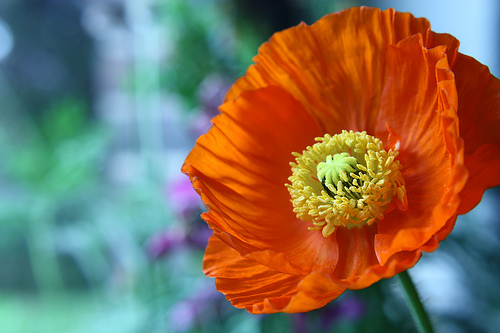
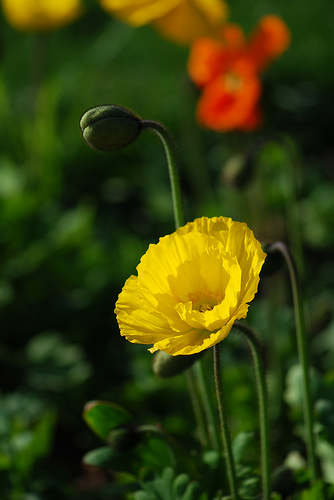
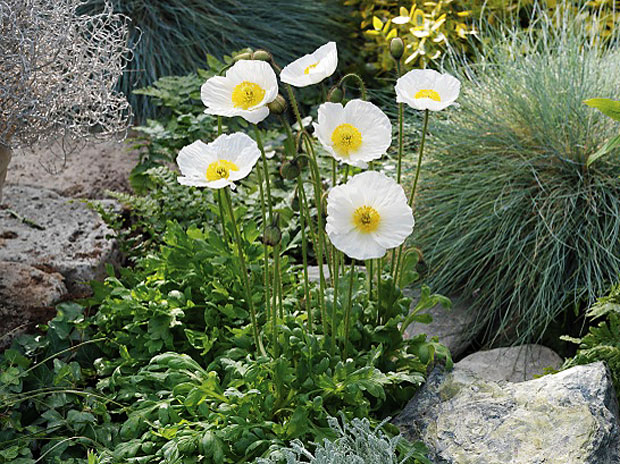
No comments:
Post a Comment